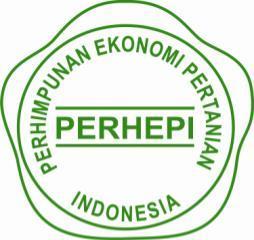Evaluasi Produksi Maggot Black Soldier Fly (BSF) pada Media Ekskreta Puyuh Periode Layer
Evaluation of the Production of Black Soldier Fly (BSF) Maggots in Quail Excreta Media During the Layer Period
DOI:
https://doi.org/10.51852/jaa.v8i2.824Keywords:
Bioconversion, BSF larvae, quail excretaAbstract
The accumulation of ammonia in excreta waste cause air pollution and health problems for both humans and livestock. A solution to address this issue is through the bioconversion process using Black Soldier Fly larvae (BSFL). This study aims to evaluate the feasibility of Black Soldier Fly Larvae (BSFL) production using quail excreta as a growth medium and to analyze biomass production (BSFL and BSFL Frass) because of bioconversion. This study used a Randomized Block Design consisting of 2 treatments: non-fermented quail excreta (P0) and fermented quail excreta (P1). The bioconversion process was carried out at 3 different time periods. The variables observed are bioconversion indicators: growth rate, conversion efficiency (ECI), the weight of the BSFL, the weight and the characteristics of the BFSL frass. The data were analyzed using analysis of variance (ANOVA), followed by the Least Significant Difference (LSD) test. The average growth rate of BSFL P0 (10.97%) and P1 (12.52%) was not significantly different, in line with the conversion efficiency (ECI) value in the P0 treatment (0.08) and P1 treatment (0.11). The bioconversion results showed that the production of BSFL in non-fermented quail excreta media reached 10.97% ± 6.74%, while in fermented excreta media it reached 12.52% ± 1.98%. This study indicates that quail excreta have the potential as a medium for BSFL production, and the excreta fermentation process does not have a significant effect on the bioconversion process based on bioconversion indicator variables.
References
Agustin H, Warid, Musadik IM. 2023. Kandungan nutrisi kasgot larva lalat tentara hitam (Hermetia illucens) sebagai pupuk organik. J. Ilmu-Ilmu Pertanian Indonesia. 25(1): 12–18. DOI: https://doi,org/10,31186/jipi,25,1,12-18
Awasthi MK, Liu T, Awasthi SK, Duan Y, Ashok P, Zhang Z. 2020. Manure pretreatments with black soldier fly Hermetia illucens L. (Diptera: Stratiomyidae): a study to reduce pathogen content. Sci Total Environ. 737: 139842.
Basri NEH, Azman NA, Ahmad IK, Suja F, Jalil NAA, Partonoor MAM. 2022. Comparison of black soldier fly larvae (BSFL) growth and frass production fed with fermented food waste, coconut dregs and cow manure. J. Mathematical Statistician and Engineering Applications. 71(4).
Cai M, Ma S, Hu R, Tomberlin JK, Thomashow LS, Zheng L, Li W, Yu Z, Zhang J. 2018. Rapidly mitigating antibiotic–resistant risks in chicken manure by Hermetia illucens bioconversion with intestinal microflora. Environ Microbiol. 20: 4051–4062.
Diener S, Zurbrügg C, Tockner K. 2009. Conversion of organic material by black soldier fly larvae: establishing optimal feeding rates. Waste Management Research, 27(6): 603-610.
Diener S, Studt Solano NM, Roa Gutiérrez F, Zurbrügg C, Tockner K. 2011. Biological treatment of municipal organic waste using black soldier fly larvae, Waste and Biomass Valorization. 2(4): 357–363. https://doi,org/10,1007/s12649-011-9079-1
El Deen SN, van Rozen K, Elissen HJH, van Wikselaar P, Fodor I, van der Weide R, Hoek-van den Hil EF, Far AR, Veldkamp T. 2023. Bioconversion of different waste streams of animal and vegetal origin and manure by black soldier fly larvae Hermetia illucens L. (Diptera: Stratiomyidae). Insects. 14(2): 204.https://doi.org/10.3390/insects14020204
Ferrarezi R, Cannella L, Nassef ARA, Bailey DS. 2016. Alternative Sources of Food for Aquaponics in the US: A Case Study with Black Soldier Flies. University of the Virgin Island: UVI/AES Annual Report 2016.
Gao Z, Wang W, Lu X, Zhu F, Liu W, Wang X, Lei C. 2019. Bioconversion performance and life table of black soldier fly (Hermetia illucens) on fermented maize straw. Journal of Cleaner Production. 230: 974–980. https://doi.org/10.1016/j.jclepro.2019.05.074
Gold M, Tomberlin JK, Diener S, Zurbrügg C, Mathys A. 2018. Decomposition of biowaste macronutrients, microbes, and chemicals in black soldier fly larval treatment: A review. Waste Management. 82: 302–318.
Holmes LA, Vanlaerhoven SL, Tomberlin JK. 2012. Relative humidity effects on the life history of Hermetia Illucens (Diptera: Stratiomyidae). Environmental Entomology. 41(4): 971–978.
Kesumaningwati R, Darma S, Ramadhan NM. 2022. Aplikasi pupuk maggot terhadap sifat kimia tanah, pertumbuhan, dan hasil tanaman sawi hibrida (Brassica juncea L). Jurnal Agroekoteknologi Tropika Lembab. 5(2): 84–91.
Lalander C, Diener S, Zurbrügg C, Vinnerås B. 2019. Effects of feedstock on larval development and process efficiency in waste treatment with black soldier fly (Hermetia illucens). J. Cleaner Prod. 208: 211–219.
Lamin S, Juswardi J, Tanzerina N, Hanum L, Muharni M, Rosmania R. 2024. Pelatihan pembuatan pupuk organik dari sampah rumah tangga dengan memanfaatkan lalat tentara hitam Hermentia illucens (Diptera: Stratiomyidae). Jurnal Altifani Penelitian dan Pengabdian kepada Masyarakat. 4(1): 97–105.
Latif JA, Putra RE, Alfianny R. 2023. Quail (Coturnix coturnix japonica) Fermented manure as a fertilizer to support Azolla microphylla growth rate. Caraka Tani: Journal of Sustainable Agriculture. 38(1): 113–124. doi: http://dx.doi.org/10.20961/carakatani.v38i1.56805
Leeson S, Summer JD. 2008. Commercial Poultry Nutrition, Third Edition. Nottingham: Nottingham University Press.
Marco A, Ramzy RR, Ji H. 2021. Influence of substrate inclusion of quail manure on the growth performance, body composition, fatty acid, and amino acid profiles of black soldier fly larvae (Hermetia illucens). Science of the Total Environment, 772,145528. DOI: 10.1016/j.scitotenv.2021.145528. Epub 2021 Feb 1. PMID: 33561603.
Myers HM, Tomberlin JK, Lambert BD, Kattes D. 2008. Development of black soldier fly (Diptera: Stratiomyidae) larvae fed dairy manure. Environmental Entomology. 37(1): 11–15.
Purnamasari L, Khasanah H. 2022. Black soldier fly (Hermetia illucens) as a potential agent of organic waste bioconversion. ASEAN Journal on Science and Technology for Development. 39(2): 69–83. doi: 10.29037/AJSTD.780
Purwanti M, Jamaluddin J, Kadirman K. 2017. Penguapan air dan penyusutan irisan ubi kayu selama proses pengeringan menggunakan mesin cabinet dryer. Jurnal Pendidikan Teknologi Pertanian. 3(1): 127–136.
Rehman KU, Ur Rehman R, Somroo AA, Cai M, Zheng L, Xiao X, Ur Rehman A, Rehman A, Tomberlin JK, Yu Z, Zhang J. 2019. Enhanced bioconversion of dairy and chicken manure by the interaction of exogenous bacteria and black soldier fly larvae. J Environ Manage. 237: 75–83.
Sudadi. 2017. Keterpaduan antara beternak puyuh, lele dan azolla dalam mengatasi limbah puyuh dan mahalnya pakan lele. PRIMA: Journal of Community Empowering and Services. 1(1):11–15.
Tahamtani FM, Ivarsson E, Wiklicky V, Lalander C, Wall H, Rodenburg TB, Tuyttens FAM, Hernandez CE. 2021. Feeding live Black Soldier Fly larvae (Hermetia illucens) to laying hens: effects on feed consumption, hen health, hen behavior, and egg quality, Poultry Science. 100(10). https://doi.org/10.1016/j.psj.2021.101400
Tirtawijaya G, Lee JH, Bashir KMI, Lee HJ, Choi JS. 2024. Evaluating the efficiency of black soldier fly (Hermetia illucens) larvae in converting mackerel head waste into valuable resources. J. Animals MDPI. 14(1332).
Wong CY, Kiatkittipong K, Kiatkittipong W, Ntwampe SKO, Lam K, Goh PS, Cheng CK, Bashir MJK, Lim JW; 2021. Black soldier fly larval valorization benefitting from ex-situ fungal fermentation in reducing coconut endosperm waste. Processes 9.275.
Yuvaraj A, Govarthanan M, Karmegam N, Biruntha M, Kumar DS, Arthanari M, Govindarajan RK, Tripathi S, Ghosh S, Kumar P, Kannan S, Thangaraj R. 2021. Metallothionein dependent detoxification of heavy metals in the agricultural field soil of industrial area: Earthworm as field experimental model system. Chemosphere. 267.
Zhan S, Fang G, Cai M, Kou Z, Xu J, Cao Y, Bai L, Zhang Y, Jiang Y, Luo X, et al. 2019. Genomic landscape and genetic manipulation of the black soldier fly Hermetia illucens, a natural waste recycler. Cell Res. 30: 1–11.
Zhang X, Zhang J, Jiang L, Yu X, Zhu H, Zhang J, Feng Z, Zhang X, Chen G, Zhang Z. 2020. Black soldier fly (Hermetia illucens) larvae significantly change the microbial community in chicken manure. Curr Microbiol. 78: 303–315.


1.png)









